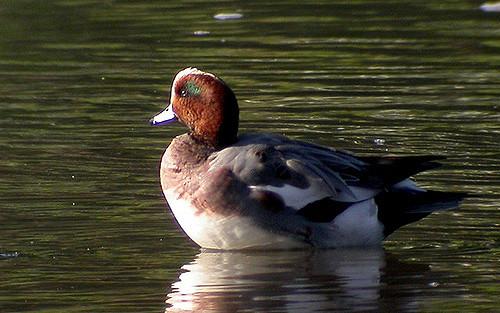Today the World Organization for Animal Health (OIE) released three new reports that show highly pathogenic avian flu spreading in both northern Africa and northern Europe.
Tunisia confirms H5 in wild birds
Thirty wild wigeons and coots were found dead in Ichkeul National Park, on the northern tip of Tunisia, according to an OIE report. The birds tested positive for highly pathogenic H5 on Nov 30, but the subtype is still unknown.
This is the first time Tunisia has reported a highly pathogenic avian strain. The country, however, is located in the center of a migration corridor that takes birds from Europe to northern Africa during the winter months, and Ishkeul Lake and the surrounding wetlands is a major stopover point for migratory birds.
As more countries in Europe and the Middle East report instances of high-path avian flu, the risk of more wild birds in North Africa could rise.
Though access to the national park is temporarily suspended, the OIE said the outbreak does not change the avian flu status of the country. A 3-kilometer (km) protection zone and a 10-km surveillance zone have been put in place; there are no industrial poultry farms within the protection zone.
H5N8 in Finland, Austria
Also today the OIE said Finland has confirmed that nation's second incidence of H5N8, at a zoo in the southern tip of the Scandinavian nation.
The outbreak in a bird zoo occurred in a group of 150 galliform birds, or fowl. Nine birds died and another 28 were destroyed. The outbreak began on Nov 26, and birds housed in separate buildings in the zoo are being monitored for signs of H5N8.
Finland reported its first H5N8 outbreak—in two dead tufted wild ducks—on Nov 25.
Austria reported more cases H5N8 in several waterfowl found dead in or near Lake Constance on Nov 7. Herring gulls, ducks, and buzzards were among the 17 birds found in Vorarlberg, a town on Lake Constance. Meanwhile Mattsee, a lake near Salzburg, reported an H5N8-related death of a duck on Nov 15 and Gmunden, a city on Lake Traunsee, reported H5N8 in a dead herring gull.
Austria reported its first H5N8 detection, also in migratory birds on Lake Constance, on Nov 11.
DEFRA warns 2 migration paths involved
Finally today, the UK Department for Environment, Food and Rural Affairs (DEFRA) released its fourth assessment on the current H5N8 outbreak in Europe. Since its Nov 18 report, there have been four more European countries (Finland, France, Romania, and Sweden) that have reported H5N8.
Thirty-five outbreaks have occurred in domestic poultry, five in captive birds, one in captive wild birds, and more than 150 reports of death in wild birds. DEFRA suggests that the virus may be spreading through not one, but two, migration paths, one toward the Black Sea and another toward the East Atlantic.
"Outbreaks have been reported in Southern Russia, Iran and Israel in the last month and recently in Egypt and the Ukraine which adds credence to the involvement of the Black Sea / Mediterranean and the East Atlantic migration routes," the report stated.
See also:
Dec 1 OIE Tunisia report
Dec 1 OIE Finland report
Dec 1 OIE Austria report
Dec 1 DEFRA update























